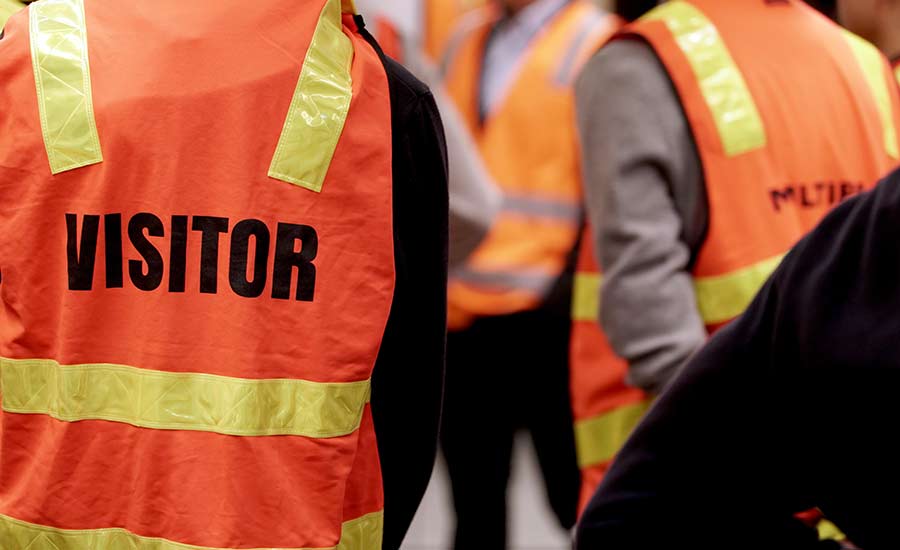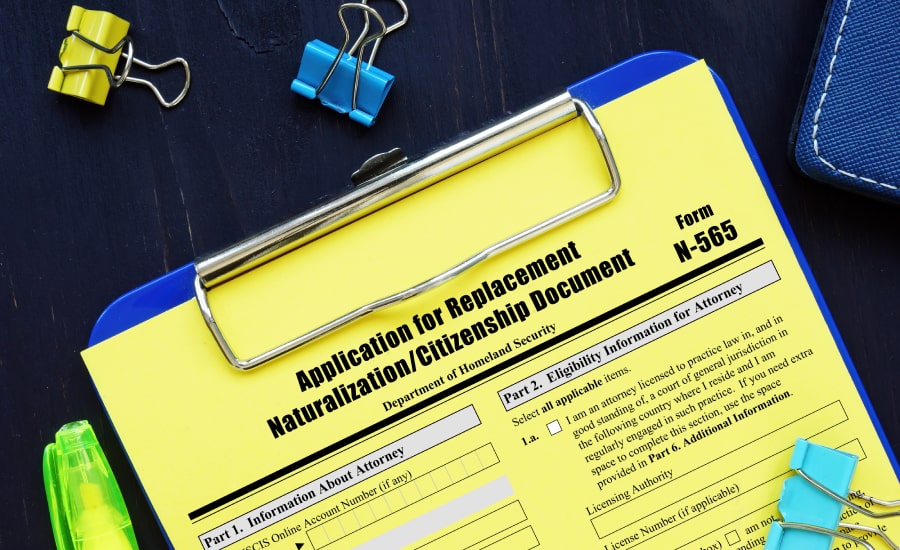

From curious onlookers to delivery personnel and inspectors, non-employees might find themselves thrown into the hazards of a construction site and suffer serious injuries as a result.
If you were involved in a construction accident as a non-employee, you might want to know more about this type of accident and the key points to consider when filing a personal injury claim.
We will provide more information on who can be held responsible and what compensation you can claim for your injuries.
Types Of Construction Accidents Involving Non-Employees
From exposure to toxic materials, falls and trips to the unexpected dangers of vehicle accidents, the dynamic landscape of a construction site can pose threats to non-employees in the vicinity.
The most common types of construction accidents involving non-employees include:
Falling Objects
Falling objects, such as construction materials, tools or debris, pose a significant risk to non-employees on construction sites.
Non-employees might suffer injuries if these objects are dropped from scaffolding, cranes or other elevated platforms — for example, if there are no barricades and exclusion zones to protect bystanders.
Falls & Trips
Falls and trips are common construction accidents that affect non-employees. Typically, they are caused by uneven surfaces, scattered cables or tools, construction debris and inadequate safety measures.
Falls can also occur on stairs, ramps or walkways with missing handrails, poor lighting or missing safety signage.
Exposure To Toxic Materials
Non-employees might suffer injuries if exposed to hazardous substances such as chemicals, asbestos or other toxic materials present on construction sites.
This can happen if non-employees work or reside near construction sites or visit the place for working purposes — for example, to conduct an inspection or audit, appraise the property or inspect the project’s progress.
Vehicle Accidents
Vehicle-related accidents involving non-employees can occur on construction sites due to the movement of construction vehicles and heavy equipment.
This can happen if non-employees are unaware of blind spots or construction vehicle routes or if the machine operator does not observe the speed limits and safety regulations.

Types Of Non-Employees Who Might Suffer A Construction Accident
Various people might become a victim of a construction accident, including bystanders, utility workers and neighboring residents.
Non-employees who might be involved in a construction accident include:
- Pedestrians or bystanders who are passing by or walking near the construction site
- Delivery personnel bringing in supplies, materials or equipment
- Inspectors and surveyors conducting audits, inspections or assessments related to the construction project
- Utility workers performing maintenance or repair work on utility lines near or on the construction site
- Emergency team members, such as firefighters, police officers or medical personnel addressing emergencies or incidents on the construction site
- Government officials conducting site visits for compliance and safety checks
- Media or journalists covering construction projects
- Investors or shareholders who might be visiting the site for updates or assessments
- Neighboring residents who live near the construction site
- Client representatives who might visit the site to monitor progress
- Contractors or subcontractors from other trades working on specific tasks within the project
- Visitors or guests who might be on-site for social, educational or business purposes

Can A Non-Employee File A Personal Injury Claim For A Construction Accident?
Yes, under certain circumstances, a non-employee might have the right to file a personal injury claim if they were involved in a construction accident. However, this will depend on various factors, such as the nature of the accident, the liability of the parties involved and the applicable laws in the jurisdiction.
Considerations include:
- Duty of care: Construction companies owe a duty of care to both employees and non-employees. If the construction company breaches this duty, and a non-employee suffers injuries as a result, a personal injury claim might be pursued.
- Strict liability: Some jurisdictions, like New York state, under Labor law 240 holds the owner of the property strictly liable if something falls on a non-employee from a height above.
- Negligence: To file a personal injury claim, the non-employee needs to prove that the construction company or another party was negligent in their duty to provide a safe environment. For example, they should be able to prove that the accident was caused by a failure to maintain a safe workplace, adhere to safety regulations or warn about potential hazards.
- Premises liability: Non-employees injured on a construction site might have the right to file a premises liability claim. In this case, they should prove that the property owner (which might be different from the construction company) failed to provide a safe environment for all visitors, including non-employees.
- Statute of limitations: Each jurisdiction has its statute of limitations, or a timeframe within which a legal action must be initiated. The statute of limitations depends on the nature of the case and the parties sued. Failing to file a claim within the legal timeframe might deprive the claimant of the right to pursue compensation.
- Evidence: Gathering evidence is crucial for a personal injury claim. Evidence can include photographs of the accident scene, surveillance footage, witness statements and medical records. Read about the importance of evidence in construction accidents lawsuits in our recent article.
Parties That Might Be Sued For A Non-Employee Construction Accident
While the immediate assumption in the event of a construction accident might be that the construction company is the primary culprit, liability might extend to other parties as well.
The parties that might be found at fault for the accident include:
- The construction company: As the primary entity responsible for managing and overseeing the project, the construction company might be held liable for the accident if its representatives were negligent or failed to comply with the safety regulations.
- Property owner: The property owner might be liable for your injuries if the accident occurred on a construction site owned by someone other than the construction company. In this case, the property owner might be at fault for failing to provide a safe environment for visitors, including non-employees.
- General contractors: In cases where there is a general contractor overseeing various subcontractors, the general contractor might be held responsible for the injuries you sustained.
- Subcontractors: Subcontractors hired for specific tasks on the construction site might be held liable for the accident if their negligence contributed to your injuries.
- Equipment manufacturers: If the accident was caused by a malfunctioning or defective piece of equipment, the manufacturer of that equipment might be liable.
- Government entities: Government entities might be held liable if they failed to enforce construction safety regulations and that contributed to the accident.
Types Of Compensation Non-Employees Can Pursue After A Construction Accident
If you sustained injuries in a construction accident as a non-employee, you might be eligible to claim various types of compensation, such as:
- Medical expenses: This compensation covers all medical expenses related to the treatment of your injuries, such as hospital bills, surgeries, doctor visits, rehabilitation costs and medication (including the use of steroid injections).
- Lost wages: This compensation includes reimbursement for past and future income lost due to your inability to work during the recovery period.
- Pain and suffering: This compensation includes damages for the physical pain, emotional distress and suffering which affected your well-being.
- Disability and impairment: This is compensation for permanent disabilities, impairments or disfigurement resulting from the construction accident.
- Loss of consortium: This compensation is awarded when your injuries have affected your relationship with your spouse or family members, leading to the loss of companionship, care and support.
- Wrongful death: This compensation covers funeral expenses, loss of financial support and emotional distress in the tragic event of a construction accident leading to the death of your loved one.
The specific compensation available to you will depend on the nature and extent of your injuries, as well as the circumstances surrounding the accident. Talk to an experienced construction accident attorney to understand your options.
Were You Involved In A Construction Accident As A Non-Employee? Schedule A Consultation With Spar & Bernstein
Whether you suffered injuries as a visitor or passerby, our experienced team at Spar & Bernstein is here to provide dedicated legal support.
Founded in 1958, our lawyers at The Law Offices of Spar & Bernstein have worked with 100,000+ personal injury and immigration clients towards spectacular successful outcomes.
With a focus on compassion and advocacy, our experienced attorneys aim to alleviate the burdens you are facing and seek maximum compensation for the injuries you suffered.
We will guide you through the legal process, conducting a meticulous investigation of the accident, identifying the parties at fault, collecting and filing all needed documentation and representing you in front of insurance companies and other parties.
We operate on a contingency fee basis, which means that you will not need to pay anything up front — our fee will be deducted from the settlement amount when and if a favorable outcome is reached.
Contact us today for a free consultation. We will make sure your rights are protected while you take the time to focus on your recovery.





